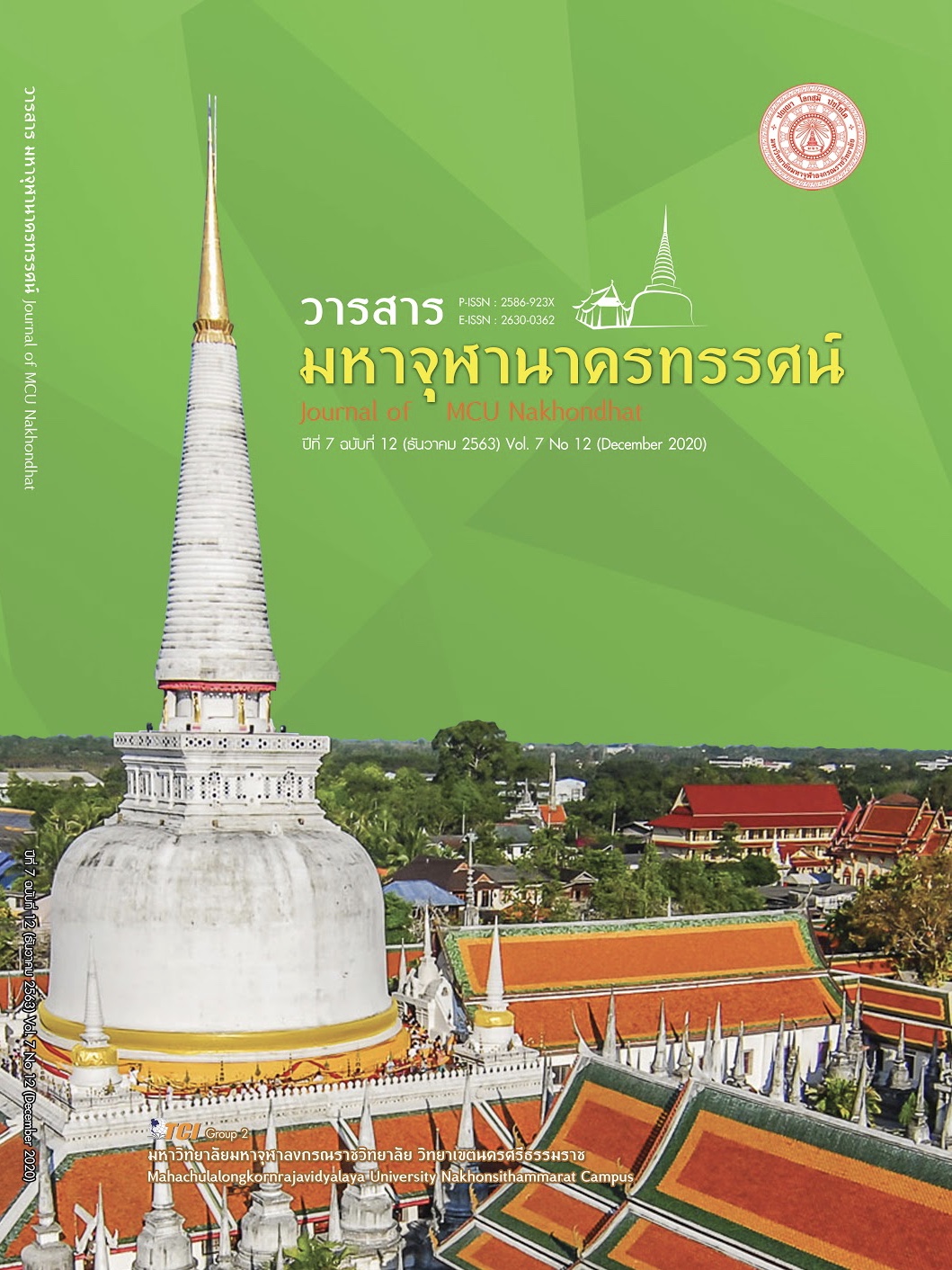STUDENTS’ MATHEMATICAL FLEXIBILITY THINKING IN MATHEMATICS CLASSROOM USING LESSON STUDY AND OPEN APPROACH
Main Article Content
Abstract
This research was aim to study students’ mathematical flexibility thinking in mathematics classroom using lesson study and open approach. This qualitative research made use of protocol analysis and analytic description. Target group was Grade 5 students in the academic year 2019. The Lesson study team consists of one graduate students, one inservice teacher, and the researcher as a teacher. This team have applied Lesson Study and Open Approach based on Maitree Inprasitha concepts in classroom since target group study in grade 4 to provide a new mathematics classroom. The empirical data analyzed in this research consisted Lesson plans for unit area, Protocols of students’ doing activity in the classroom, student works, field note and Record reflecting of Lesson study team. The Imai’s framework was used to Interpreting students’ mathematical flexibility thinking. The study found that Target students have more mathematical flexibility thinking. The analysis start form Collaborative Plan: the team creating a lesson plan and predicting student ideas. Collaborative Do: Found mathematical flexibility ideas 7 concepts of Area, such as direct comparison of space, Square grid construction, area transformation, use of the rectangular area formula, find the area by addition, find the area by multiplication, use the width or length. Collaborative See: Found that students were able to achieve their goals. student’s mathematical flexibility thinking in the beginning had not many ideas, but after one academic year of innovation they found that students had more various solutions. Some activities were not anticipated by the lesson study team. This team learns the concepts that come up with each plan
Article Details
References
ไมตรี อินทร์ประสิทธิ์. (2561). การศึกษาชั้นเรียนด้วยวิธีการแบบเปิด: PLC ภาคปฏิบัติจริงในโรงเรียน (Open Approach Lesson Study: An Authentic PLC Practice in School). ขอนแก่น: สถาบันวิจัยและพัฒนาวิชาชีพครูสำหรับอาเซียน.
จุฬาลักษณ์ ใจอ่อน. (2551). การวิเคราะห์การก้าวข้ามภาวะยึดติดในสถานการณ์การแก้ปัญหาปลายเปิดโดยอาศัยการประเมินความคิดสร้างสรรค์. ใน วิทยานิพนธ์ศึกษาศาสตรมหาบัณฑิต สาขาวิชาคณิตศาสตรศึกษา. มหาวิทยาลัยขอนแก่น.
ประเวศ วะสี. (2544). ยุทธศาสตร์ทางปัญญาและการปฏิรูปการศึกษาที่พาประเทศพ้นวิกฤต. กรุงเทพมหานคร: พริกหวานกราฟฟิค.
ปิติพงษ์ วิริยาภรณ์ประภาส. (2560). ความคิดสร้างสรรค์ทางคณิตศาสตร์ของนักเรียนระดับชั้นมัธยมศึกษาปีที่ 5 ในชั้นเรียนคณิตศาสตร์ที่ใช้การศึกษาชั้นเรียนและวิธีการแบบเปิด. ใน วิทยานิพนธ์ศึกษาศาสตรมหาบัณฑิต สาขาวิชาการศึกษาวิทยาศาสตร์และเทคโนโลยี. มหาวิทยาลัยขอนแก่น.
สถาบันส่งเสริมการสอนวิทยาศาสตร์และเทคโนโลยี. (2561). คู่มือการใช้หลักสูตรกลุ่มสาระการเรียนรู้คณิตศาสตร์ (ฉบับปรับปรุง พ.ศ. 2560) ตามหลักสูตรแกนกลางการศึกษาขั้นพื้นฐานพุทธศักราช 2551 ระดับประถมศึกษา. กรุงเทพมหานคร: สถาบันส่งเสริมการสอนวิทยาศาสตร์และเทคโนโลยี.
Becker, J. P. & Shimada, S. (1997). The Open - Ended Approach: A New Proposal for Teaching Mathematics. Reston, Virginia: National Council of Teachers of Mathematics.
mai, T. (2000). The relationships between fluency and flexibility of divergent thinking in open ended mathematics situation and overcoming fixation in mathematics on Japanese junior high school. In T. Nakahara, M.Koyama (Eds.), Proceedings of the 24th Conference of the International Group for the Psychology of Mathematics Education. Hiroshima, Japan: Hiroshima University.
Inprasitha, M. (2010). One Feature of Adaptive Lesson Study in Thailand - Designing Learning Unit. In Proceeding of the 45th Korean National Meeting of Mathematics Education Donggok University. Donggok University.
Inprasitha, M. (2011). Lesson Study as an Innovation for Teacher Professional Development: A Decade of Thailand Experience Paper presentation at ICER2011, Faculty of Education. Khon Kaen: Khon Kaen University.
National Council of Teacher of Mathematics (NCTM). (2000). Principles and Standards for School Mathematics. Washington D.C.: National Academy Press.
Nohda, N. (2000). Teaching by open - approach method in Japanese mathematics classroom. In Proceeding of the 24th conference of the international Group for the Psychology of Mathematics Education. Hiroshima, Japan: Hiroshima University.
Saito & Akita. (2004). How to evaluate students, creativity and attitude. In Documentation of the first annual conference of the Mathematics Education Research Partnership. Khon Kaen: Khon Kaen University.
Shimizu, Y. (2007). Lesson study: What, why, and how? In H. Bass, Z. Usiskin, & G. Burill (Eds.), Studying classroom teaching as a medium for professional development: Proceedings of a US - Japan Workshop (pp. 53 - 57). Atlanta, GA: National Academices Press.
The Partnership for 21st Century Learning. (2015). Framework for 21st Century Learning. Retrieved May 14, 2018, from http://www.P21.org


